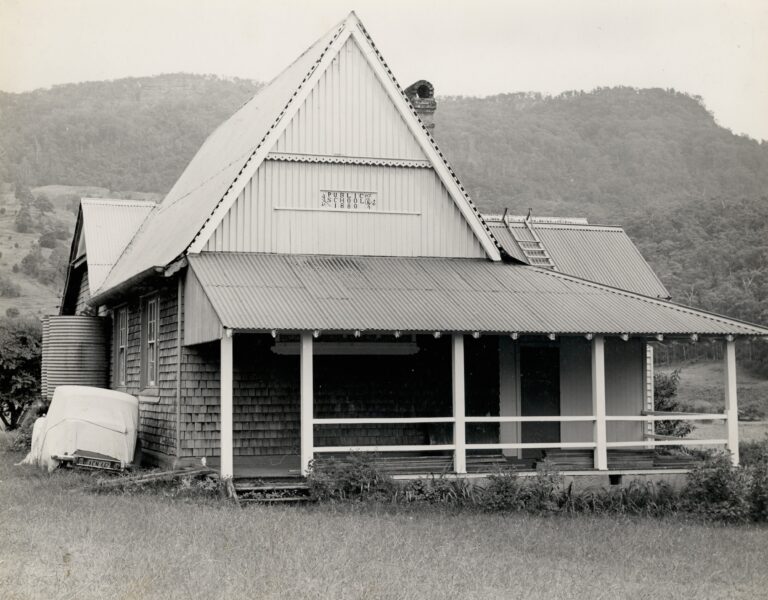
John Horbury Hunt designed many buildings in Kangaroo Valley: additions to Barrengarry House (1880), The Church of the Good Shepherd and Rectory (1871), and the Barrengarry Public School (1880). He also designed many other buildings in New South Wales.
He was born near Liverpool, England in October 1838. As a small child his family moved to New Brunswick, Canada. He commenced his training as an architect in 1856 near Boston, Massachusetts in the United States. He came to Australia in 1863 aged 25 – a brilliant architect who then worked in Sydney and rural New South Wales
Hunt’s distinctive, radical architecture was considered to be 20 years in advance of his peers, some of it unequaled in the world at that time, and sowed the seeds of some aspects of modern architecture in Australia. His designs were said to have a freshness, vitality and originality. His skill with timber and brickwork was particularly outstanding, and he was a master of complexity of form and asymmetrical balance.
Hunt designed and built cathedrals, churches, chapels, houses, homesteads, stables and schools across New South Wales. For example, he was commissioned to design the National Art Gallery in Sydney in 1884-5 and the convent at Rose Bay, which is reported as being ‘structurally breathtaking’
Hunt was the President of the Institute of Architects of New South Wales from 1889 to 1895.
He had clothes that had special pockets to hold drawing instruments, and his hat had a compartment to store drawing paper. This enabled him to whip up a detailed drawing on the spot. His bicycle, on which he traveled to Sydney jobs, was fitted with a collapsible drawing board for convenience.
Hunt’s business was ruined by the depression of the 1890s. After his wife Elizabeth died in 1895, his life fell apart. He sadly died on 28 December 1904 at the Royal Prince Alfred Hospital, suffering from inflammation of the kidneys known as Bright’s Disease. He was close to destitute at the time of his death. He is buried at South Head Cemetery, saved from a pauper’s grave by his fellow architects.
References: Australian Dictionary of Biography, Volume 4, 1972, by J. M. Freeland; Trove Newspapers and Joy Hughes, Museum of Sydney.
Photos from State Archives, Kangaroo Valley Historical Society and the University of Wollongong Archives Online.
Christine Murphy